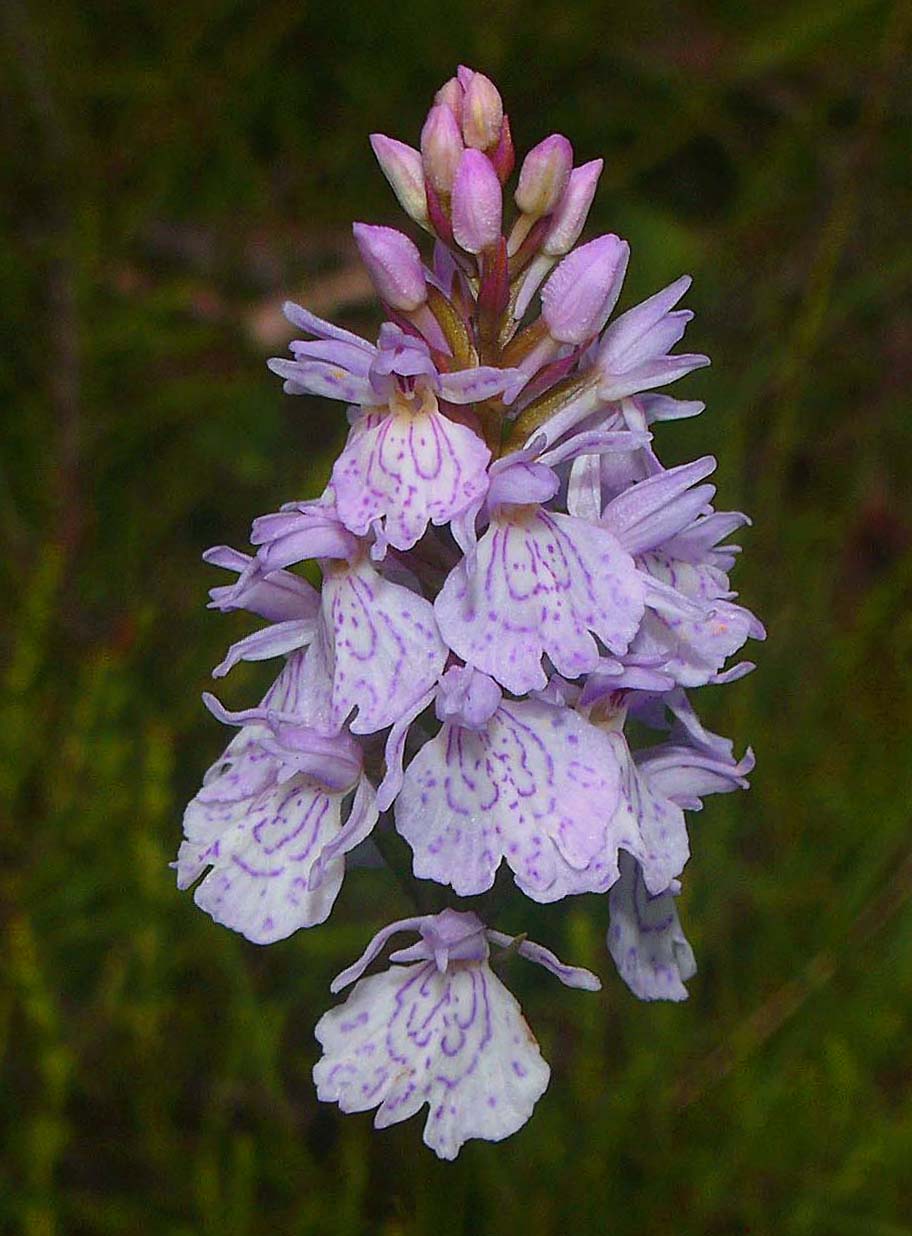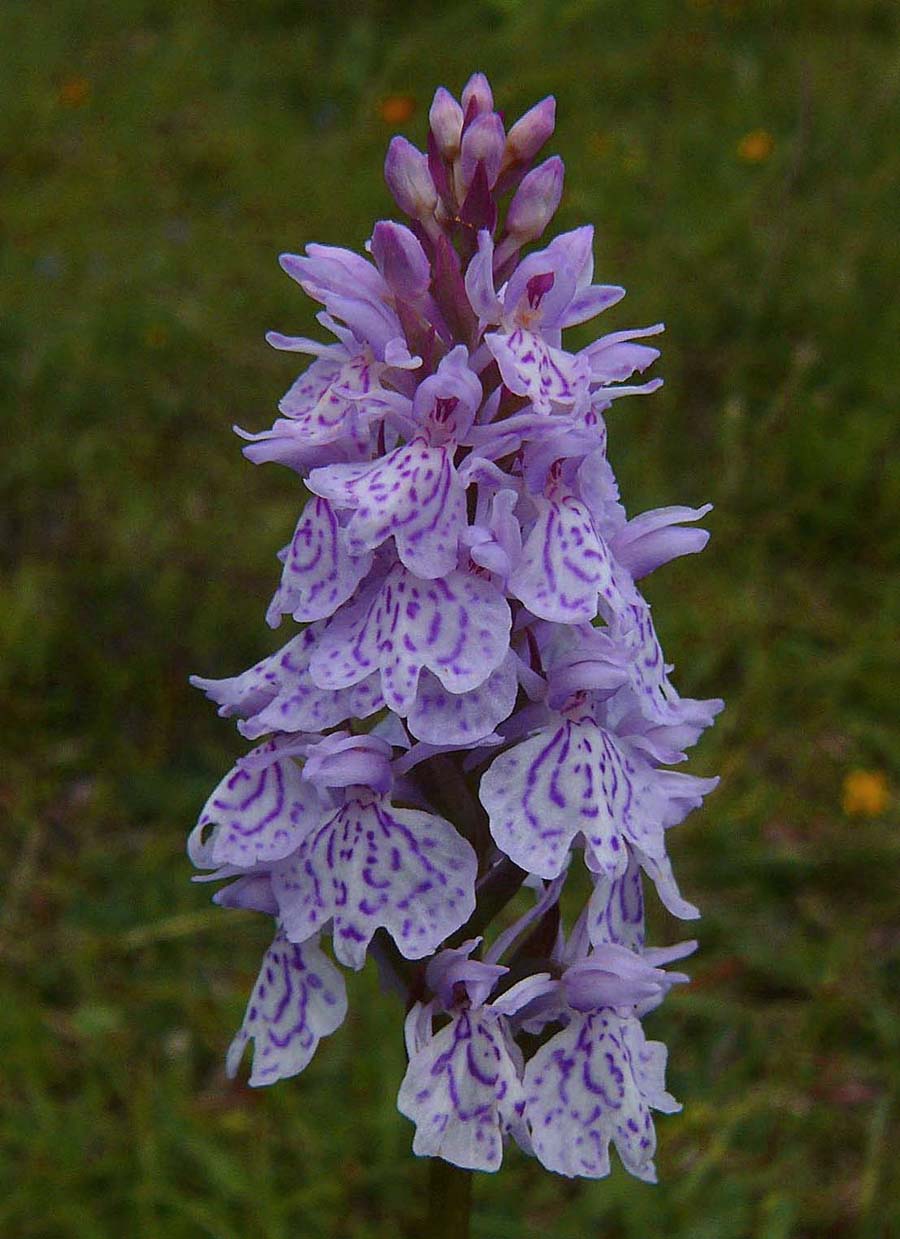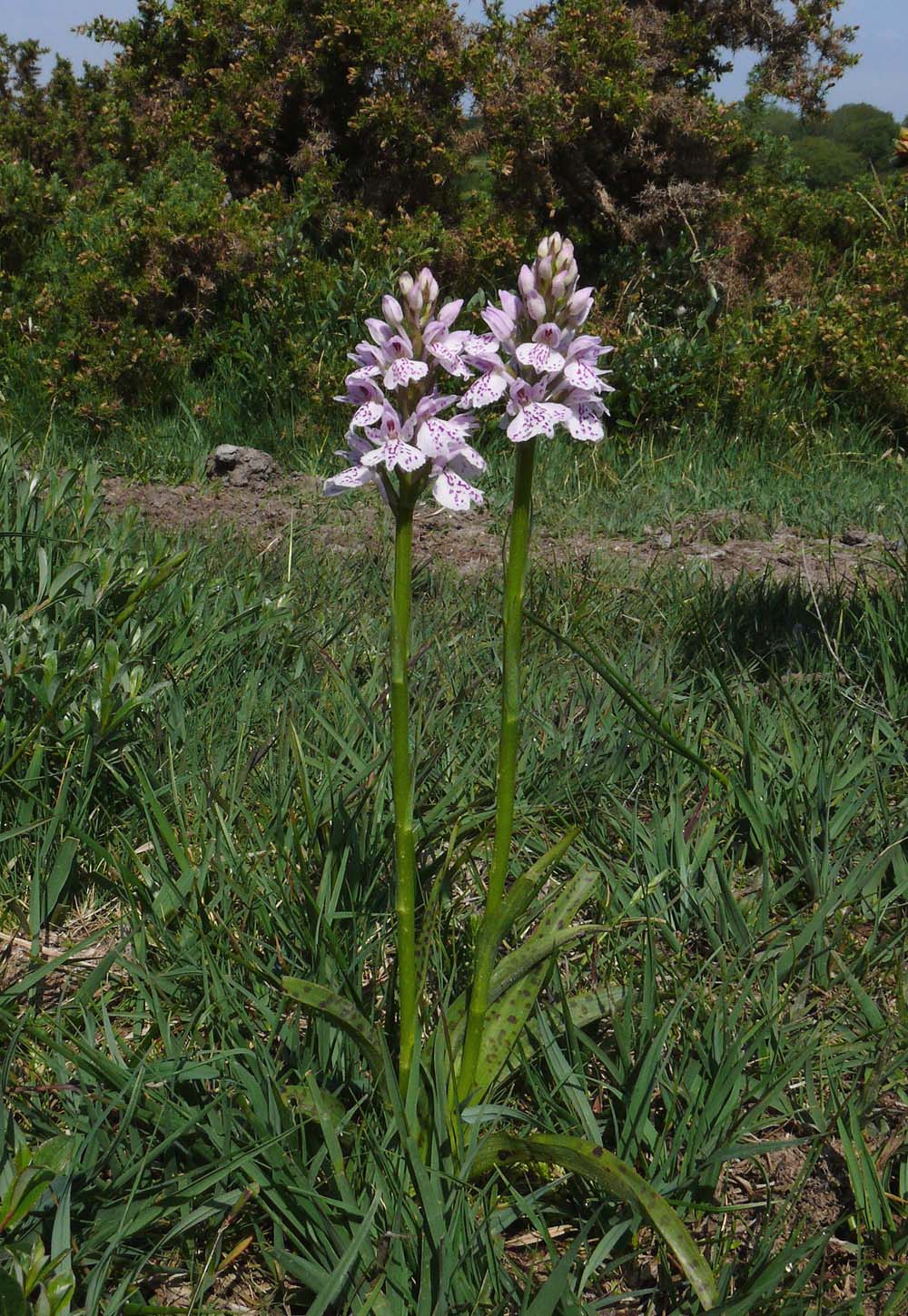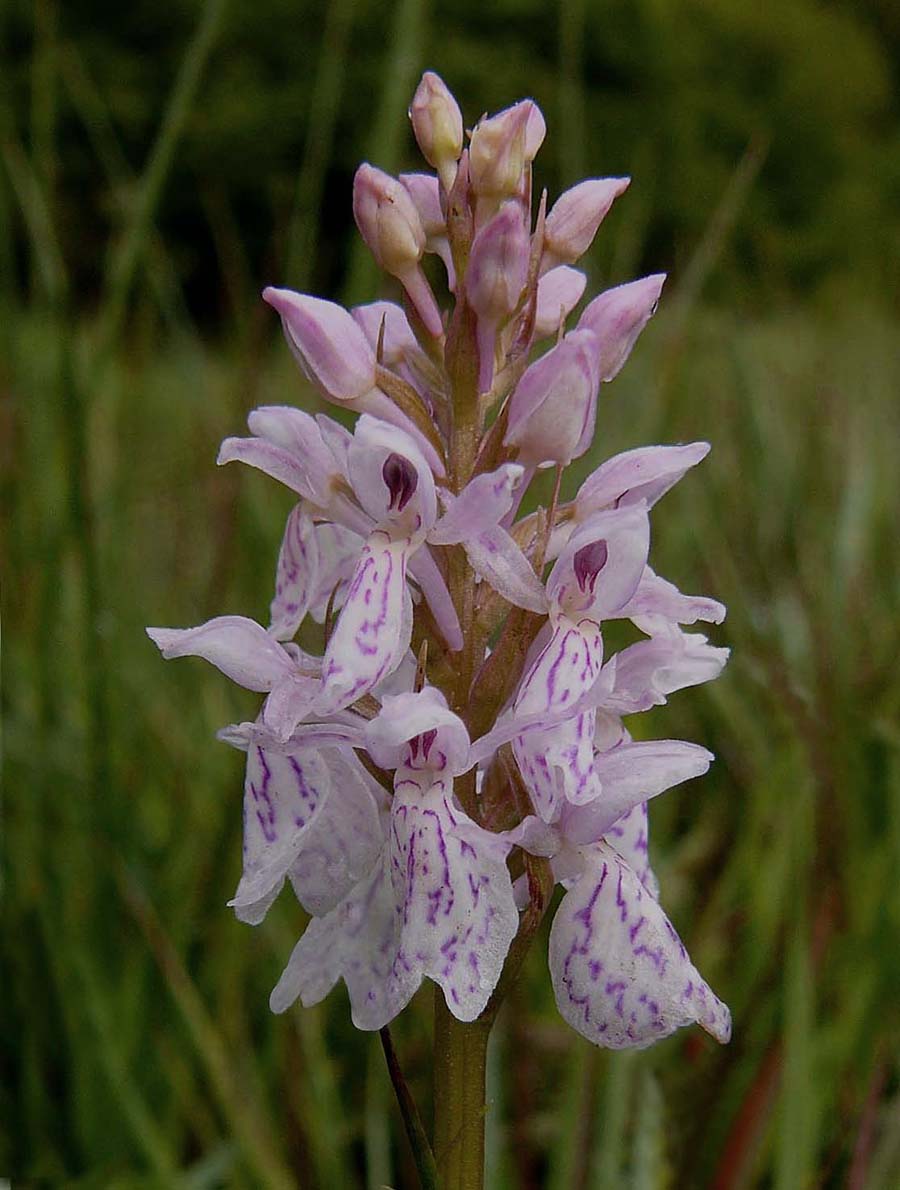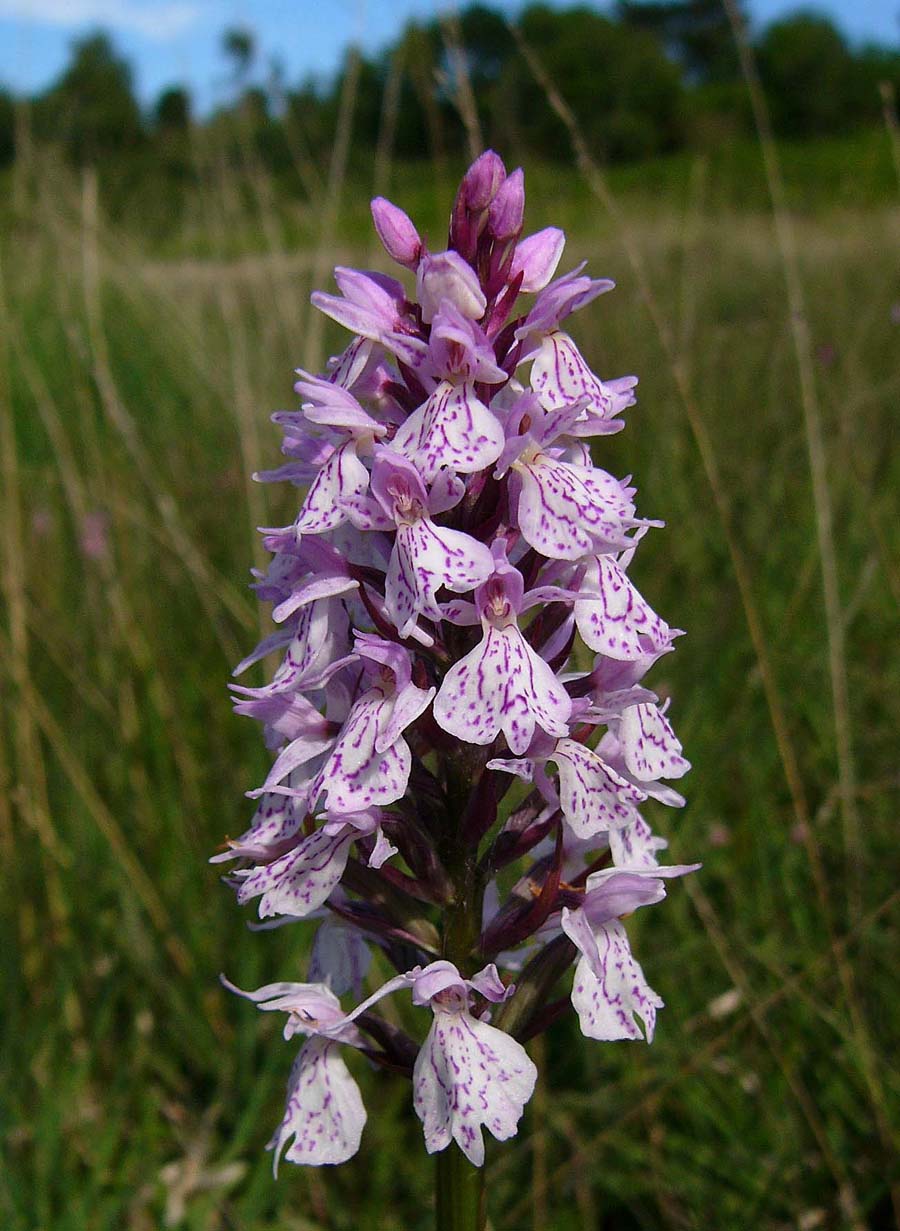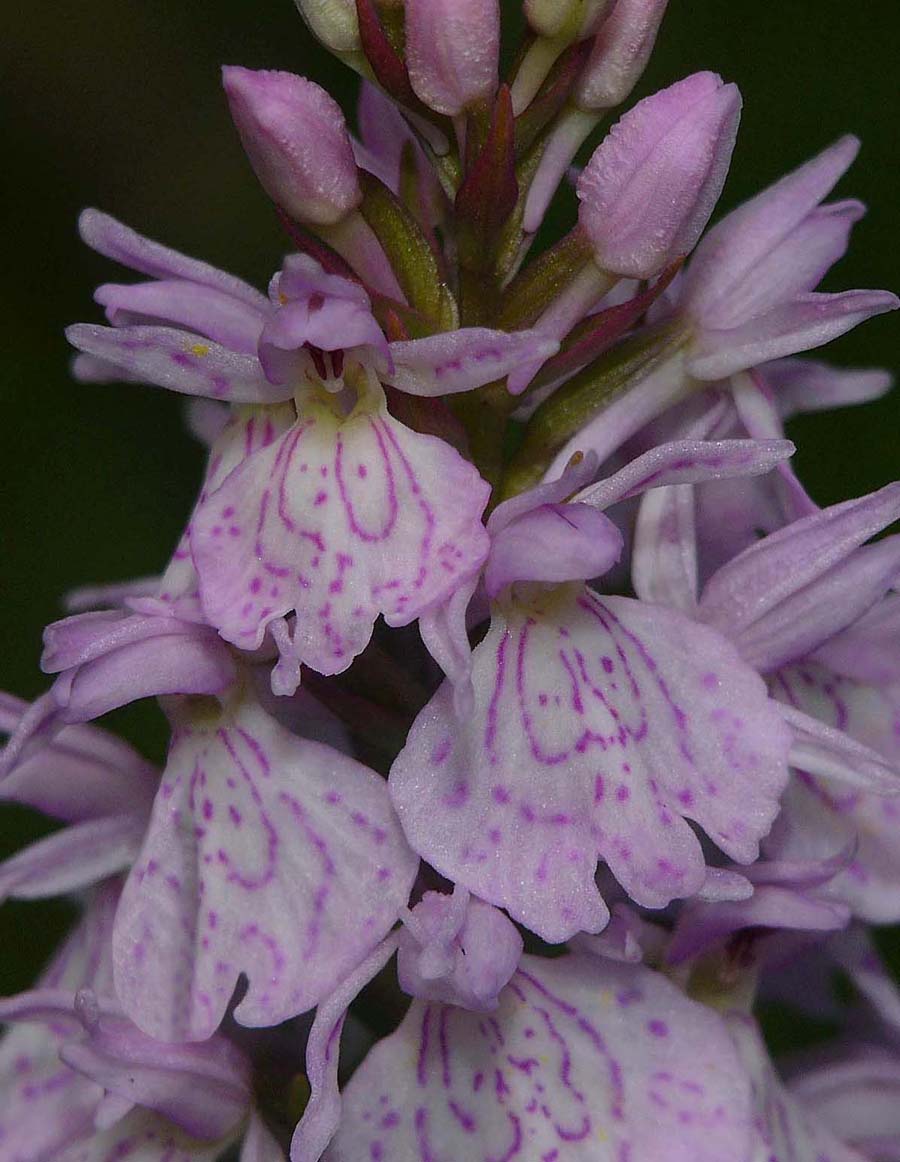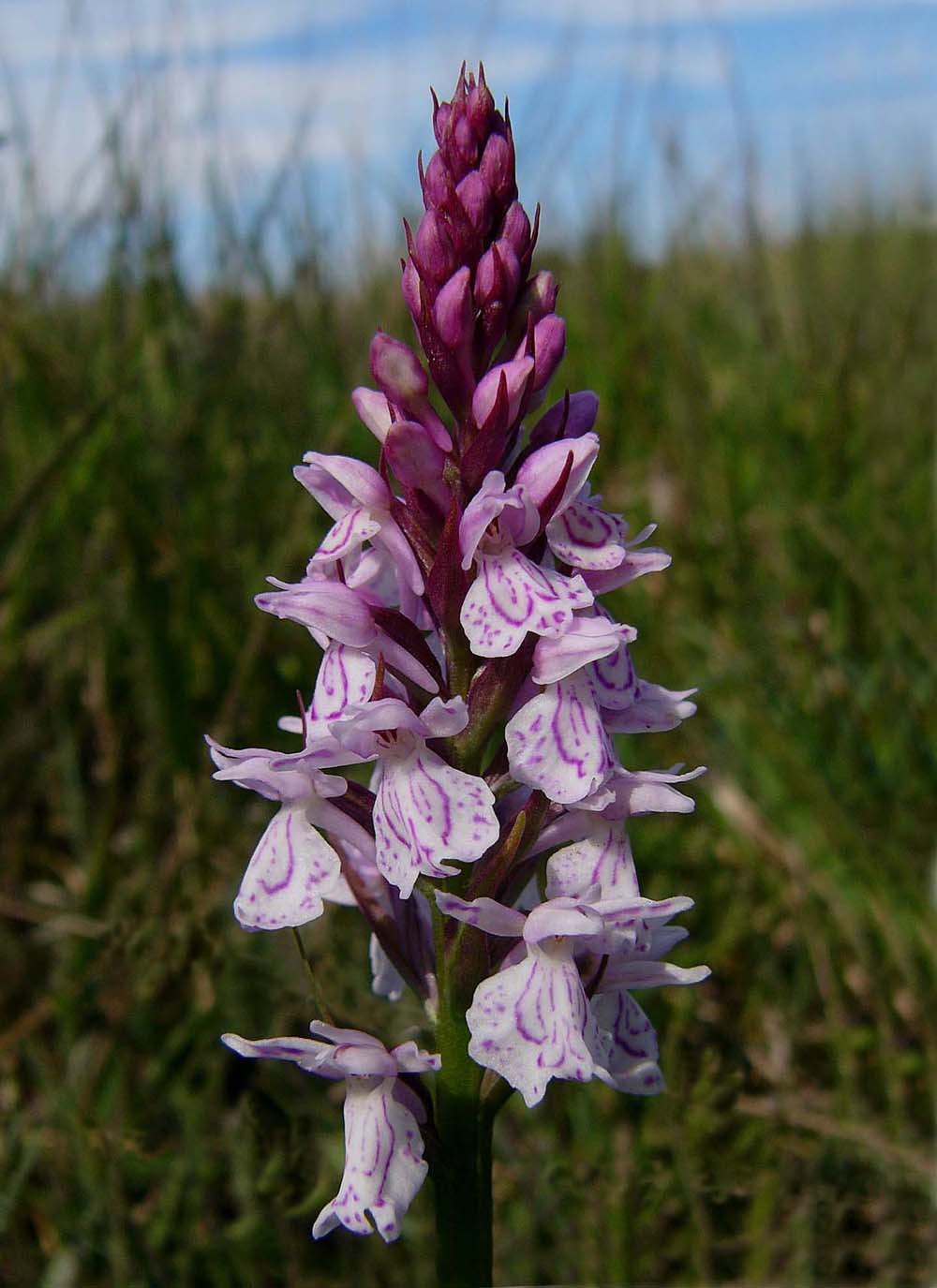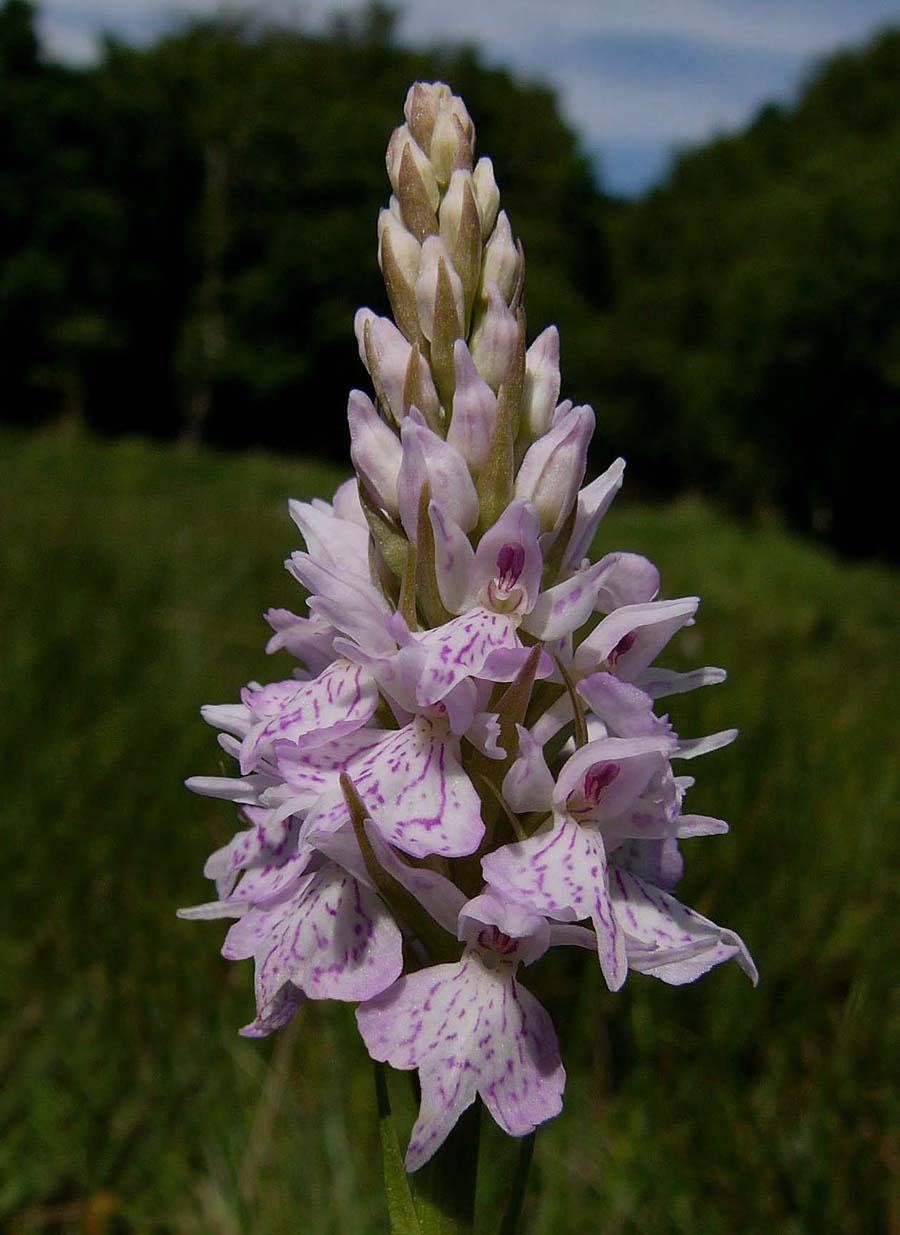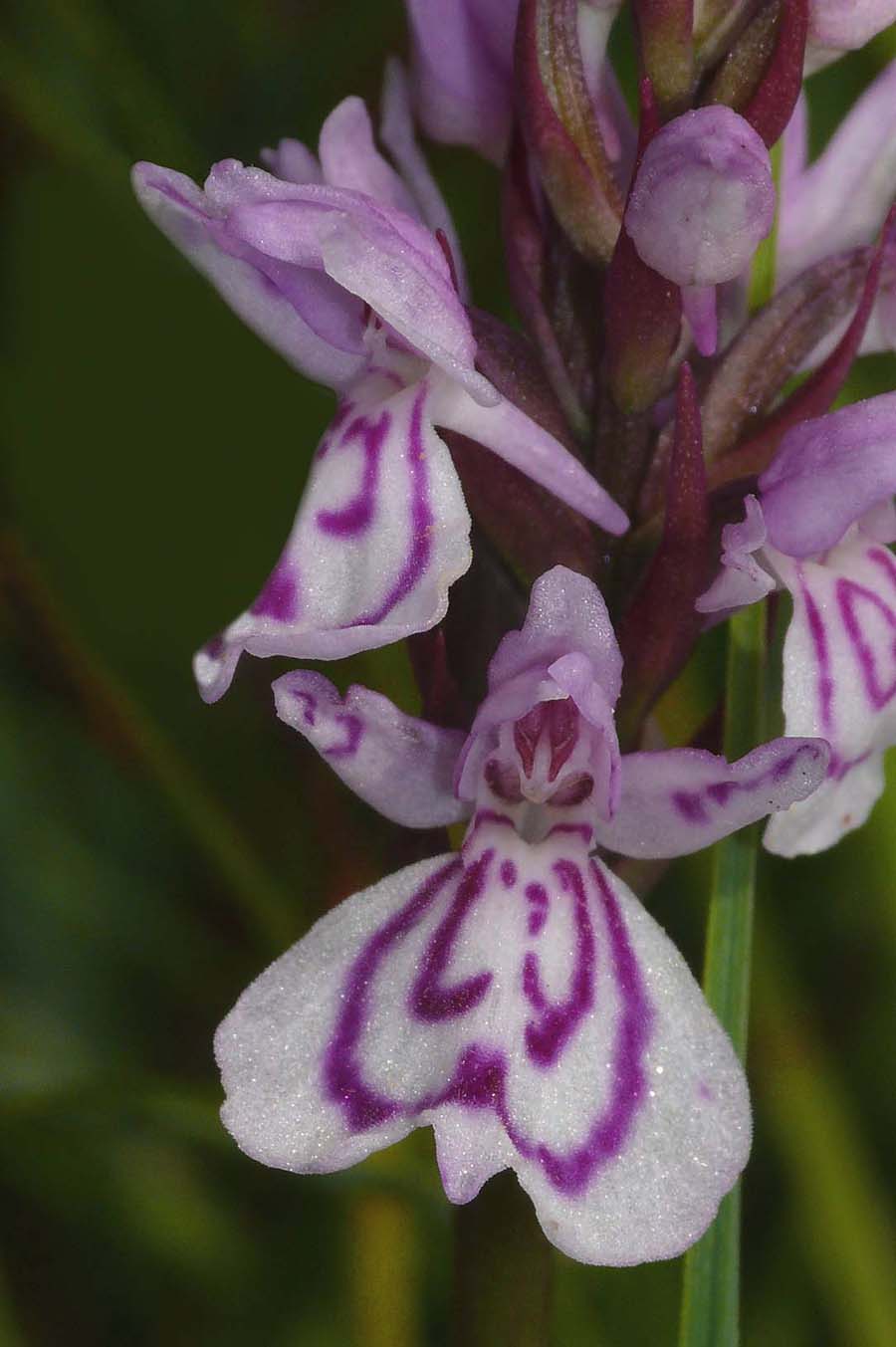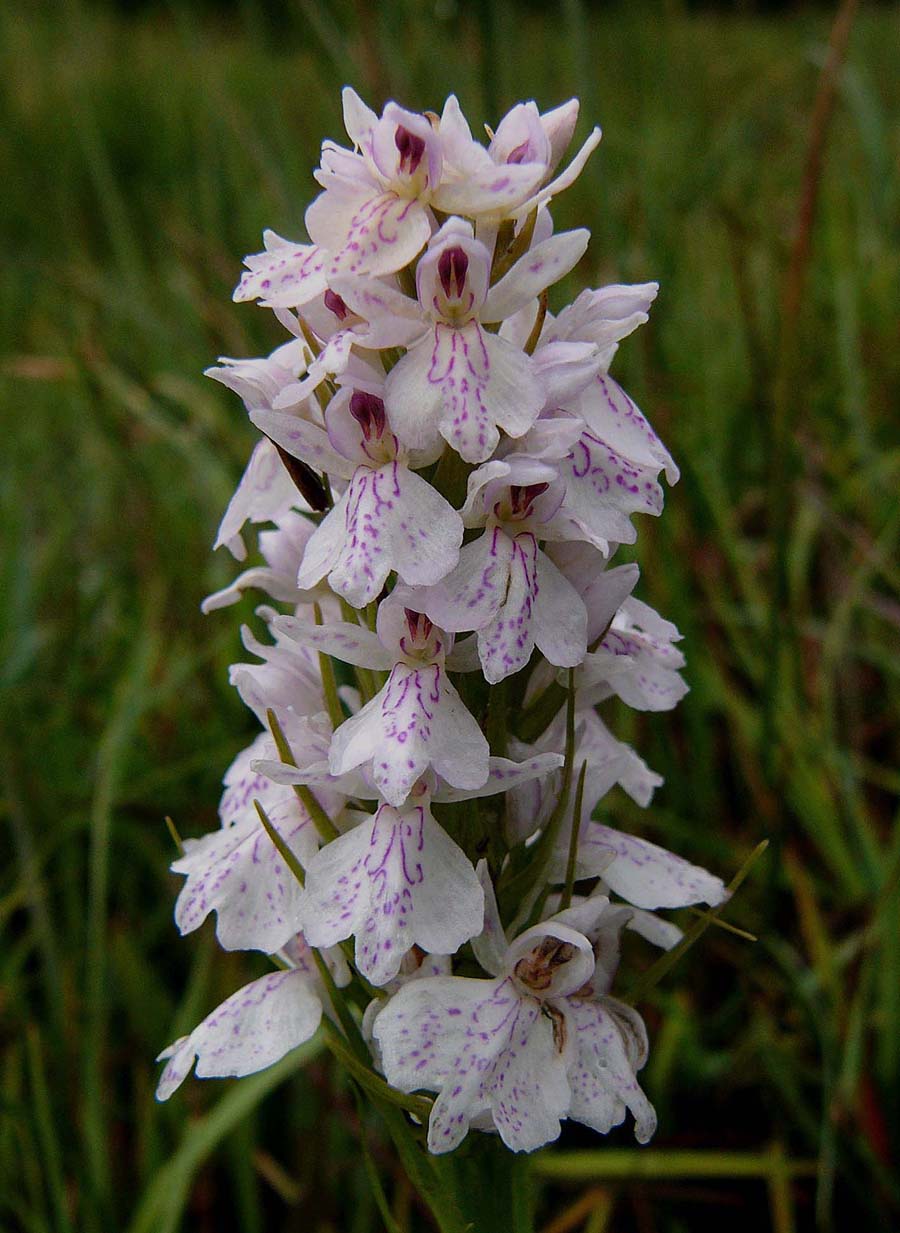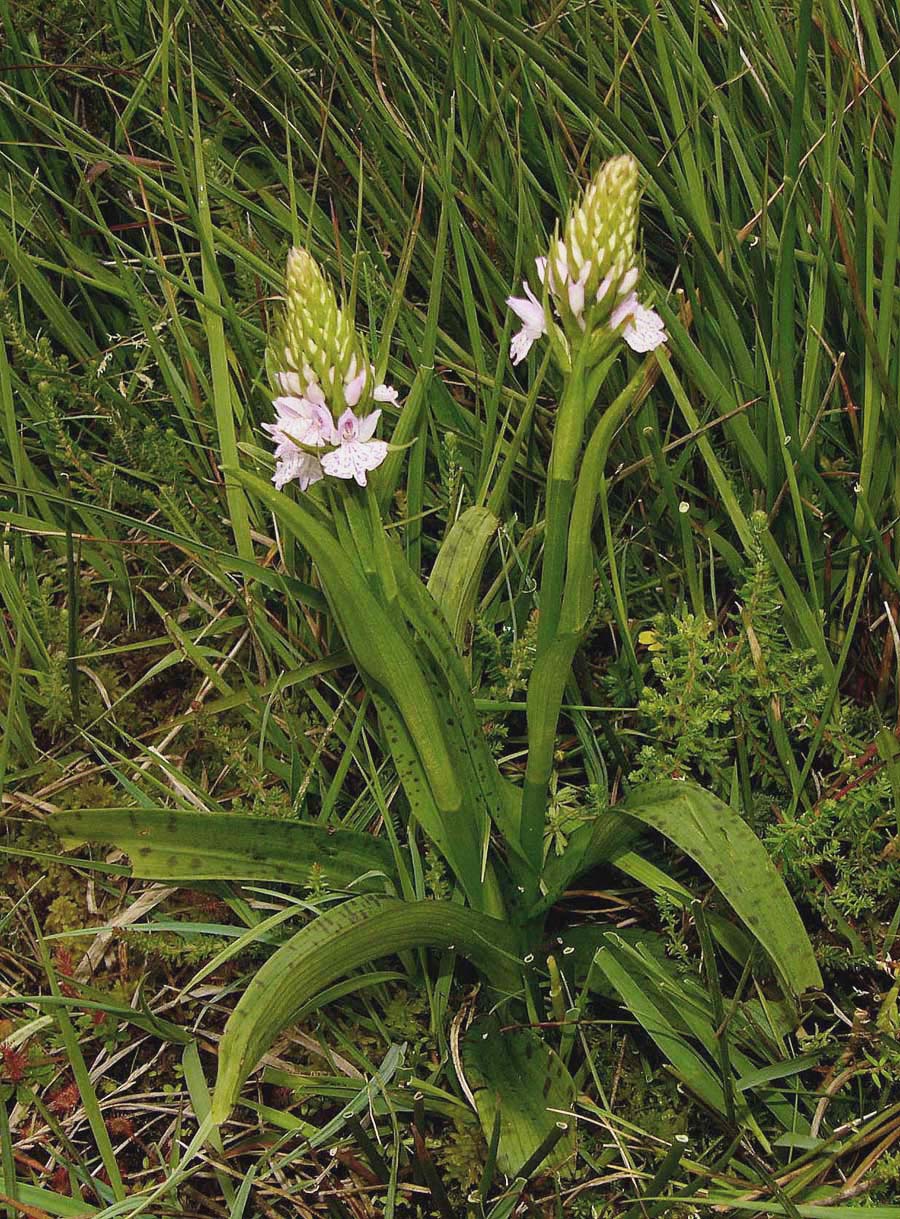This species was first described
from Uppsala, Sweden in 1753 and its name literally means "spotted".
For many years it has been known commonly as the Heath Spotted
Orchid and will be familiar to anyone who has studied the flora of
acidic wetlands in Northern Europe.
D. maculata
is a widespread and often abundant orchid with a distribution throughout
temperate Europe and Asia. It is a
member of the large D. maculata group and although at first sight this species can be confused with its close relative D. fuchsii,
its preferred habitat is significantly different, this being a key
distinguishing consideration. Although both these species may be found in
damp or even marshy areas, D. fuchsii is an orchid of alkaline substrates and D. maculata,
almost exclusively a plant of acidic conditions that are never subject to seasonal drying
out. Apart from these differences in the ecology of the two species,
there are some physical features which serve to distinguish them
and these include the more slender, pointed leaves and less centralised
lip markings of D. maculata.
The flowers of this orchid can sometimes
be relatively dark lilac but are most frequently of paler shades and its by no means
rare to find completely white examples. It flowers at the same time as D. fucshii, from late May through to August and the plants depicted here date from the months of June and July. Amongst the numerous
recognized variants is transsilvanica from the far east of Europe, which is almost always a completely unmarked white or pale yellow.
The photographs are from the New Forest, Dorset (southern England) and Argyll in Scotland.
The photographs are from the New Forest, Dorset (southern England) and Argyll in Scotland.
